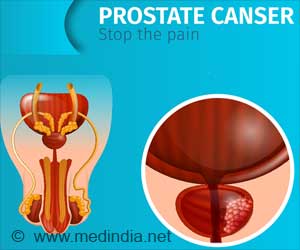Opioid drugs used to relieve pain in postoperative patients may stimulate growth and spread of tumors, finds study published in Anesthesiology.

New studies provide new cluesOpioid-based painkillers, such as morphine, have been the gold standard for treatment of postoperative and chronic cancer pain for 200 years. Several studies published since 2002, however, suggest that opioids can stimulate the growth and spread of cancer cells. Laboratory research from the University of Chicago Medicine and a genetic study from the University of North Carolina Medical Center both argue that the mu opioid receptor plays an important role in tumor progression and support a therapeutic role for opioid antagonists.
One study presented in the journal — from a group led by Patrick Singleton, PhD, assistant professor of medicine at the University of Chicago Medicine — shows how opioids already present in the body can enhance the malignant tendencies of human lung cancer cells transplanted into mice, even without the addition of morphine.
Singleton's team found that cells from various types of human lung cancers have five to 10 times as many opioid receptors as non-cancerous lung cells. They mapped out two of the biochemical pathways — Akt and mTOR, both targets for current chemotherapeutics — triggered by contact between endogenous opioids and the receptors. They also show how this interaction can increase proliferation, migration and invasion of tumor cells, three hallmarks of cancer growth and spread.
In this study, human lung cancer cells with additional copies of the opioid receptor grew more than twice as fast as tumor cells that lacked extra receptors when transplanted into mice. More troubling, they were 20 times more likely to spread to distant sites. Medications that block the opioid receptors, such as naloxone or methylnaltrexone, reduced tumor growth and spread. "Our findings," they conclude, "suggest the mu opioid receptor may be a therapeutic target."
The other paper in the journal, a retrospective study by Andrey Bortsov, MD, PhD, assistant professor of anesthesiology and colleagues at the University of North Carolina, used human data to bolster the opioid-cancer link.
"The results of this study," the authors wrote, "provide support for the hypothesis that endogenous and/or exogenous opioids, acting via the mu opioid receptor, may influence cancer outcomes."
Moss and University of Chicago colleagues approached the issue from a similar angle. They were involved in clinical trials of methylnaltrexone, a drug developed at the University of Chicago and approved by the Food and Drug Administration in 2008. This drug, marketed as Relistor™, was designed to block the peripheral side effects of opioids, such as nausea and constipation, without disrupting pain relief, which occurs in the brain. Following an early clinical study, Moss and colleagues noted that cancer patients receiving this peripheral opioid blocker in a compassionate-use protocol lived longer than expected.
"These were patients with advanced cancer and a life expectancy of one to two months," Moss recalled, "yet several lived for another five or six months. It made us wonder whether this was just a consequence of better GI function, or could there possibly be an effect on the tumors?"
They began a series of studies looking at the many peripheral effects of opioids and the potential benefits of blocking those effects. They found that those opioids enhanced tumor growth, angiogenesis, vascular permeability and metastasis. Drugs that blocked the opioid receptor reduced cancer growth and helped prevent invasion and metastasis. Tumors did not grow in mice that lacked the mu opioid receptor.
In a commentary in the journal, Moss, Singleton and Frances Lennon, PhD, summarize results from multiple studies to argue that opioids — drugs like morphine or the body's own opioids, such as endorphins — appear to have a significant and direct proliferative effect on cancer cells, aside from their effect suppressing immunity. They suggest a possible therapeutic role for mu opioid receptor antagonists on cancer growth and metastasis, but caution that "there are no clinical trials in humans demonstrating a direct effect."
Source-Eurekalert
 MEDINDIA
MEDINDIA




 Email
Email










